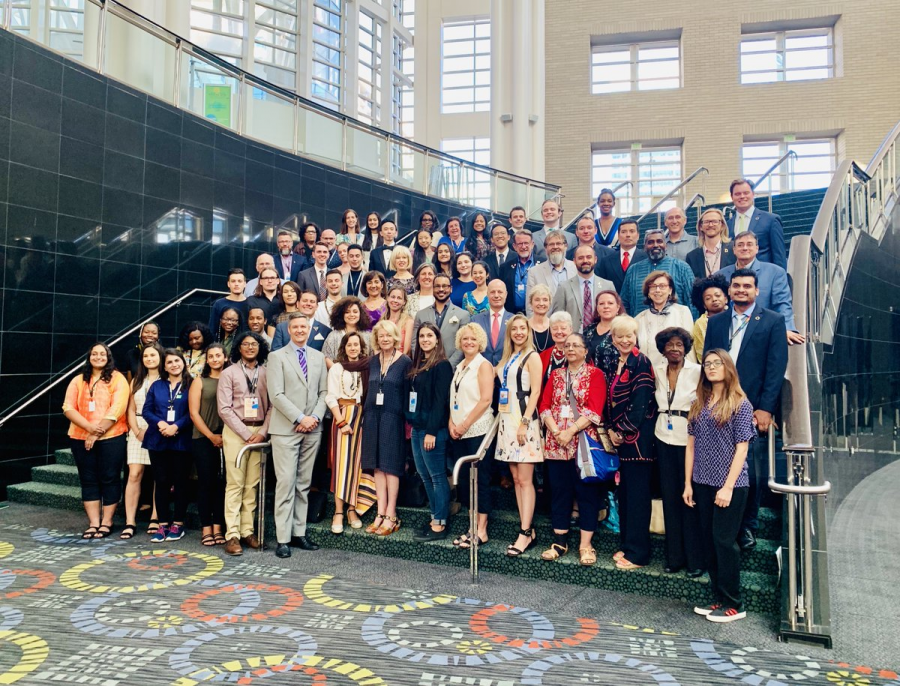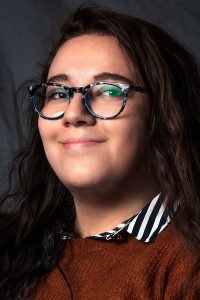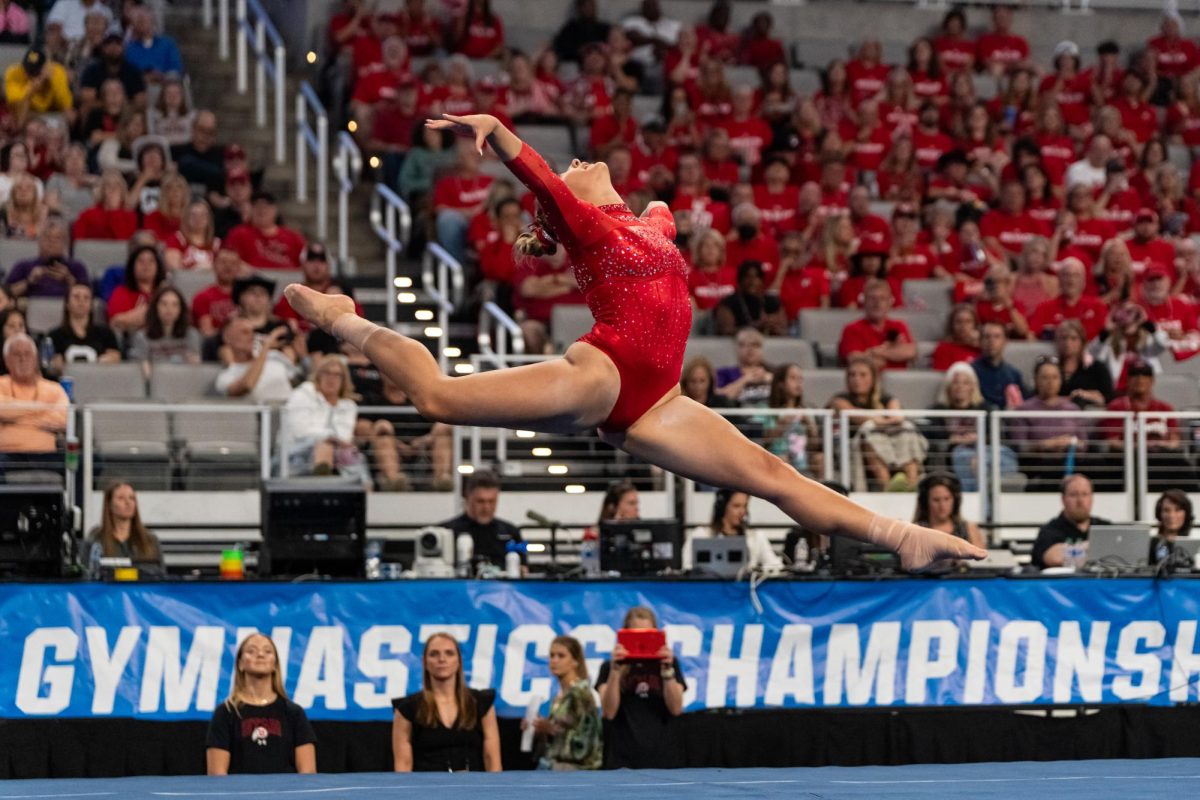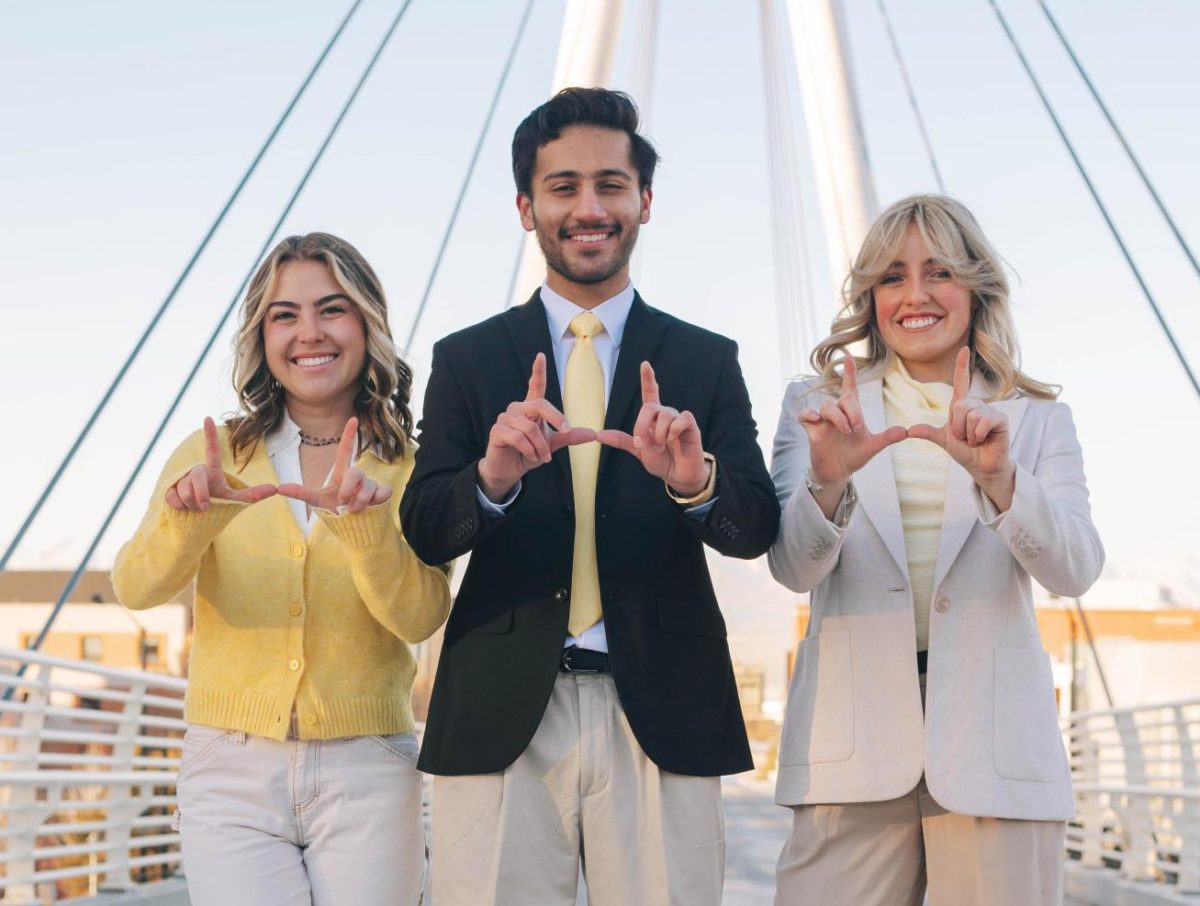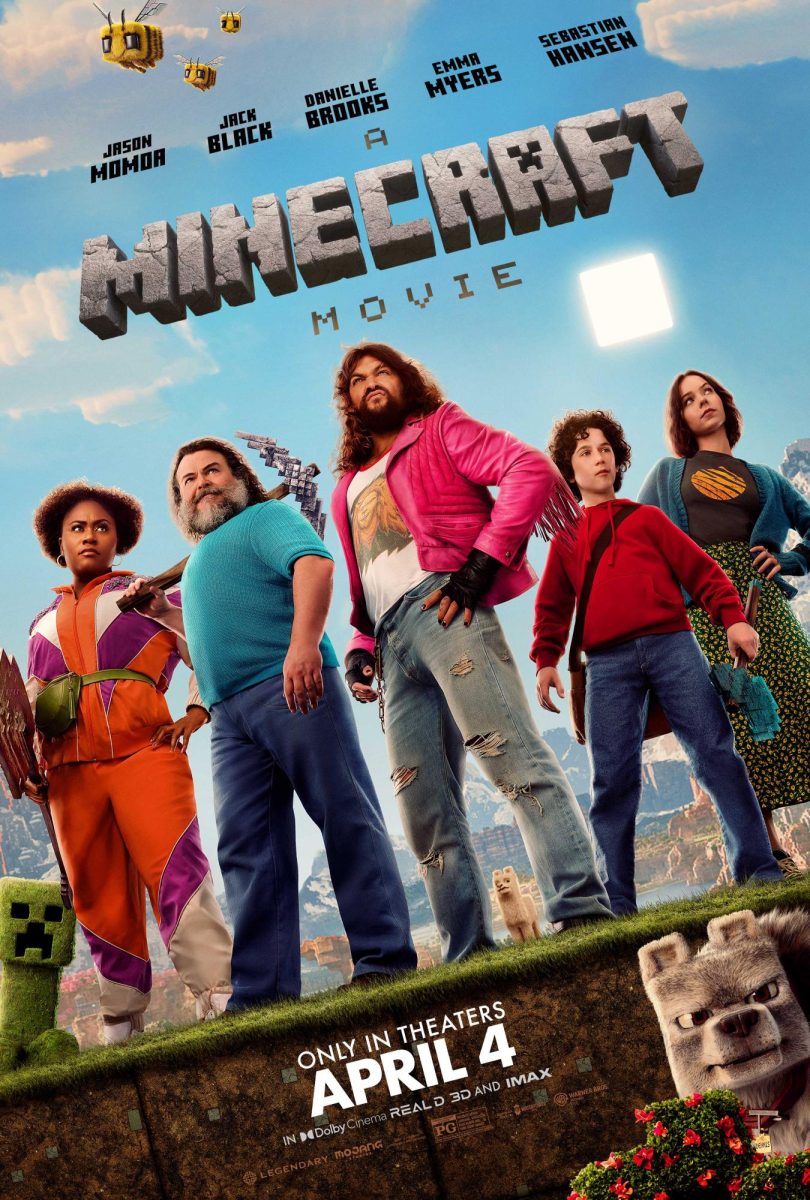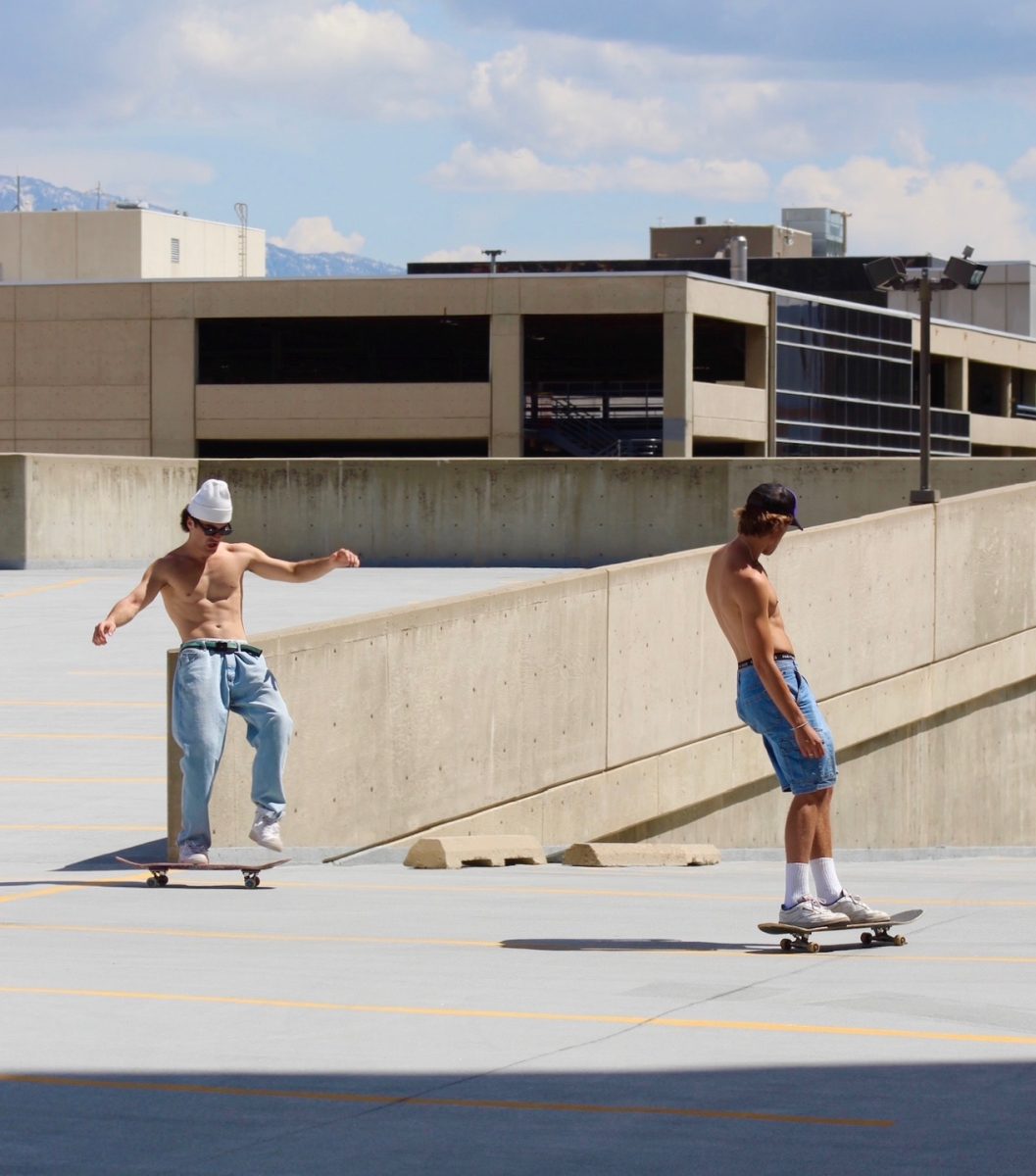SLC Hosts the UN for 68th Annual Civil Society Conference
September 10, 2019
For the past 50 years, the United Nations has not held conferences outside of its own headquarters. In the summer of 2018, the U.N. announced that they would be holding their first conference outside of New York in the summer of 2019. On Aug. 26-28, 2019, the 68th annual Civil Society Conference took place in Salt Lake City at the Salt Palace Convention Center.
Plenary
While the official and relatively exclusive opening ceremony happened the Sunday night before the conference, the opening Plenary kicked off the conference on Monday morning, Aug. 26. The Plenary was moderated by the chair of the conference and U.N. Director of the Department of Global Communications, Maher Nasser. He began the conference by expressing his gratitude to Salt Lake City for hosting the conference and, by extension, his gratitude to the SLC Mayor Jackie Biskupski and her office. While the hour-and-a-half plenary included speeches from dignitaries all over the world (15 in total), it also included a cultural performance from Nino Reyes and a group of native performers.
Keeping up with the tone set by the director, exemplaries from all corners of the world expressed their gratitude and excitement for the days to come. In addition, there was heavy emphasis on youth involvement in the U.N. and the power of their voices. Alison Smale, U.N. Under-Secretary-General for Global Communications, said, “Youth have gone beyond raising their voices. They have pioneered global movements on the most pressing challenges of our time, such as climate change.” Then she went on to explain the importance of the conference by stating that “This conference here in Salt Lake City is also unique because of the special partnership that literally pieces it together. It’s planned not by the U.N. for civil society, but with civil society for civil society.”
Smale closed her speech with optimism, saying that “It is my hope through this conference we realize that the challenges we face are not insurmountable and can be overcome if we work in unison. This is a platform for civil society, member states, academia and the private sector to create new partnerships and conceive the best multilateral approaches to help tackle global crises. It is only through our collective efforts that we can face the critical challenges that lie ahead of us to build resilient and peaceful societies.”
Another emphasis was placed on the U.N.’s 17 Sustainable Development Goals which are meant to be reached by 2030. This conference in particular focused on SDG 11, sustainable cities and communities, specifically making cities and human developments inclusive, safe, resilient and sustainable. It makes Salt Lake City an obvious choice for the conference. Salt Lake has a gradually more diverse population due to its increasing number of refugees. In addition, Utah has become renowned for its continued sustainability efforts. Mayor Biskupski stated in her speech that “This is an issue close to my heart, and it is central to what I have been working on during my time in office. At no other time in history have cities and local communities played such an important role in the health and well-being of the world … Here in Salt Lake City we are leading out on shifting to 100% clean energy by 2030.”
Mayor Biskupski and former United States Ambassador and current University of Utah professor John Price spoke immediately after Nino Reyes and his group of performers. The plenary was closed out with final words from Maher Nasser, where he reinforced his appreciation of SLC for hosting the conference and his excitement for the coming days.
UN Civil Society 101: Activism not Acronyms
After the opening plenary, the remainder of the conference operated with breakout sessions occurring throughout the three days. These were workshop sessions put on by the U.N. and their participating non-governmental organizations. A breakout session titled “U.N. Civil Society 101: Activism not Acronyms” was hosted by Holly Shaw DNP, director of the NGO-DPI committee, and several of her own NGOs, as well as Dr. Rose Cardioly, who is also a director of her own NGO and additionally serves on the U.N. executive committee of the Department of Public Information.
The breakout session was styled similarly to a Socratic seminar, where the speakers introduced themselves and allowed the attendees to introduce themselves as well. This allowed for the generally confused populous to clear the air on the array of terminology that was used throughout the conference as well as how to bypass the confusing barriers which may stop an individual or NGO from becoming involved with the U.N. They began by explaining the non-governmental organizations and DPI, now known as the Department of Global Information, a branch of the U.N. that is tasked with raising awareness for U.N.’s NGOs. It is also the same department that is tasked with approving the different statuses of their NGOs, beginning with the accreditation status. This allows an NGO to be officially recognized by the U.N.
The absolute highest status that an NGO could sit at is consultative status, though this is the most difficult level to achieve. This status is precisely what it sounds like, allowing an NGO to consult with members of the U.N., such as diplomats and ambassadors, on issues that the U.N. might be facing. This became the basis for the remainder of the conference, as the majority of the breakout sessions were hosted by NGOs who hold consultative status with the U.N.
High-Level Political Forum: Climate Action Summit
This workshop, hosted by a consultative NGO named Carol Baur, addressed the issue of the 17 SDGs which the U.N. hopes to reach by 2030 as well as the U.N. Climate Action Summits. They brought in three highly qualified speakers to talk about their current efforts to achieve these SDGs in a very realistic and sustainable way; also specifying how to engage with youth populations to reach the mutual goal of a better world.
Jean-Baptiste Bassene, a huge promoter of Model United Nations within major universities in New York and additionally a largely active member of the Carol Baur Foundation, went so far as to bring his university students down to Mexico (the home base for Carol Baur) every year to work on sustainability efforts. Bassane, who has been working with Carol Baur in their efforts for 22 years, spoke of the importance of youth involvement in sustainability efforts.
Mr. Bassane spoke about the school, NGO and foundation of Carol Baur by saying that “At the center of everything they do is the students, and it’s excellent to see.” Former Congressman from Mexico and President of Carol Baur Martin Olavarrieta was next to speak. He spoke about the objectives of the multilayered Climate Action Summit. Olavarrieta stated, “The goals of the Climate Action Summit are to one, meet the Paris agreement goals; two, to host a public platform for leaders; three, to host an action-oriented summit; and lastly, to model effective efforts towards a more sustainable future.”
Olavarrieta’s son and youth representative for Carol Baur, Martin Olavarrieta Maturana, spoke on the strategies to be implemented in order to achieve a better future. Maturana explains the strategy by stating that “One, we must come up with a mitigation strategy. Two, we need to help reinforce our social and political drivers such as NGOs and coalitions. Three, we need to fully utilize youth engagement and public mobilization. Four, we must focus on sustainable energy transitions. Five, we then need to focus on the larger picture of industry transition. Six, we need to find nature-based solutions. Lastly, we need to focus on resilience and adaptation.”
Bassane closed off the breakout session with incredibly powerful words: “The Earth does not discriminate. Neither should we. It is no longer enough to just fight, we must act.”
Employing technical innovations to improve global health
This breakout session brought together a multitude of people, including several University of Utah professors and presidents. Some were Dr. John Langell, director of the Center of Medical Innovation for the U, and Troy D’Ambrosio, executive director of the Lassonde Institute at the U. This session primarily focused on SDG 11, good health and well-being. They discussed how to use high-tech and low-tech innovations to improve global health, primarily in developing countries and small-scale societies.
Dr. Langell spoke about how involving communities in their own medical innovations allows for genuinely sustainable improvements in global health. Langell stated that “Without community involvement, you are creating non-sustainable improvements for short term results. In order to get truly impactful results, you must innovate for impact and use emphatic immersion, meaning that we must work together and get on the ground to observe the problem and current solutions. Only then will we see technological innovations with true impact.”
The breakout session went on to further emphasize the importance of holding this conference in Utah and SLC, which is not only a haven of creating sustainable communities but the host state for universities such as the U, a world-leading university in medical innovations for a better world.
Takeaway
While at first glance it may seem confusing to host such a highly regarded international conference in Utah, upon further investigation, it was made evident that Salt Lake City was the perfect place to hold such an important event. With an increasingly diverse population, its continuous efforts to build more sustainable communities and its world-leading centers for technological innovations, there truly was no better place to hold the 68th annual Civil Society Conference. Salt Lake City was happy to be the home away from home to some of the most influential people in the fight for a better future and hopes to welcome the U.N. again sometime soon.


